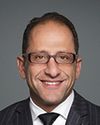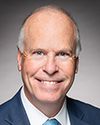Mr. Speaker, the world changed on Thursday, September 8, 2022. It has been stated by many that most people alive today have known only one Queen of the United Kingdom, of the Commonwealth, of Canada, and that is certainly true for me. We have a collector's magazine on our coffee table at home dated June 1953, commemorating the coronation of then 25-year-old Princess Elizabeth, who had been Queen for a couple of months already, due to the sudden unexpected passing of her father, King George VI.
Just to date myself, I was born between those two dates, that of her accession to the throne and her coronation.
It has been noted that Elizabeth has been Queen of Canada for almost half of its existence as a modern state. It is historic that we now see a transition from a queen to a king, something that we are all going to have to get used to.
Even though the face of the monarchy has changed from Elizabeth II, who is well adored and loved by the whole world, to Charles III, who has very big shoes to fill now, nothing has really changed. As a member of Parliament, I swore allegiance to Elizabeth II and her heirs. Parliament was not dissolved. The government continues to function. The political party of which I am a member continues to be the loyal opposition, loyal to the Crown.
It bears noting that another historical event has taken place recently. Our colleague, the member for Carleton, has now become the leader of His Majesty's loyal opposition, a phrase that has not been used in 70 years.
I never met the Queen, but I always felt I knew her, going back to my elementary school days at Virginia Park Elementary School in Edmonton, Alberta. Every classroom in the school proudly displayed a more or less up-to-date photograph of the Queen. We saluted the flag. We recited The Lord's Prayer. We sang God Save the Queen almost as often as we sang our national anthem, Oh Canada.
I love that Canada is multicultural. I am personally a beneficiary of that, having been born to parents who had just recently immigrated from the Netherlands. While they maintained many of their Dutch traditions, they truly valued the rich traditions around the British Crown and all that goes with it: the parliamentary government, a stable monarchy, the stability offered by a monarch who rides above the politics of the day. These are concepts that they grew up with in their home country and that were instilled in us as children.
I never met Queen Elizabeth, but it is in my DNA to respect the value that an unchanging monarchy brings to our national identity, stability and unity.
Canadians see their elected representatives disagree about almost everything and some days, judging by what goes on in this chamber, one would think that there was very little unity and almost no national identity. However, we can always turn to the Crown and remind ourselves that, in fact, we are one.
How will Charles III measure up to his mother in performance of royal duties? I am sure he will do a great job, but in a way it doesn't really matter. The functioning of government does not depend on the strengths or failings of the monarch of the day.
It matters a lot in this respect: More and more people in the Commonwealth nations and in Canada are questioning the relevance of a royal family that dates back to the Middle Ages, to feudal Europe, to earlier days of class structures. None of this has a place in our modern, egalitarian, democratic society, so how does this ancient tradition survive? By adaptation, of course. Elizabeth II did that very well. She knew when to speak, when to be silent, when to be present, when to be absent, when to be transparent and how to manage the mystique behind the royal throne.
She demonstrated servant leadership since the very beginning of her public life. In a statement that she made to the Commonwealth on her 21st birthday, she said, “my whole life whether it be long or short shall be devoted to your service”. For the next 75 years, she demonstrated that she actually meant those words.
Nowhere was this commitment to humble servant leadership more evident than in her annual Christmas address.
In 2014, she said this in her Christmas address:
For me the life of Jesus Christ, the Prince of Peace, whose birth we celebrate today, is an inspiration and anchor in my life.
A couple of years later, in 2016, she included these words in her Christmas address:
Billions of people now follow Christ's teachings and find in him a guiding light for their lives. I am one of them....
As the years went by, Elizabeth became more vocal about her Christian faith. Maybe age gave her pause to reflect on her own mortality. Maybe the instability of the world around her made her reach for the stability that she found in this ancient faith. Maybe it was also Elizabeth II demonstrating servant leadership in her other role on earth, and that is head of the Church of England. She understood that even as England became more and more of a multicultural, multiracial, multi-faith society, it was still highly relevant for the head of the Church of England to use the language of the church.
In closing, I am going to quote the Archbishop of Canterbury, who said the other day:
May Her Late Majesty Queen Elizabeth II rest in peace and rise in glory.






















